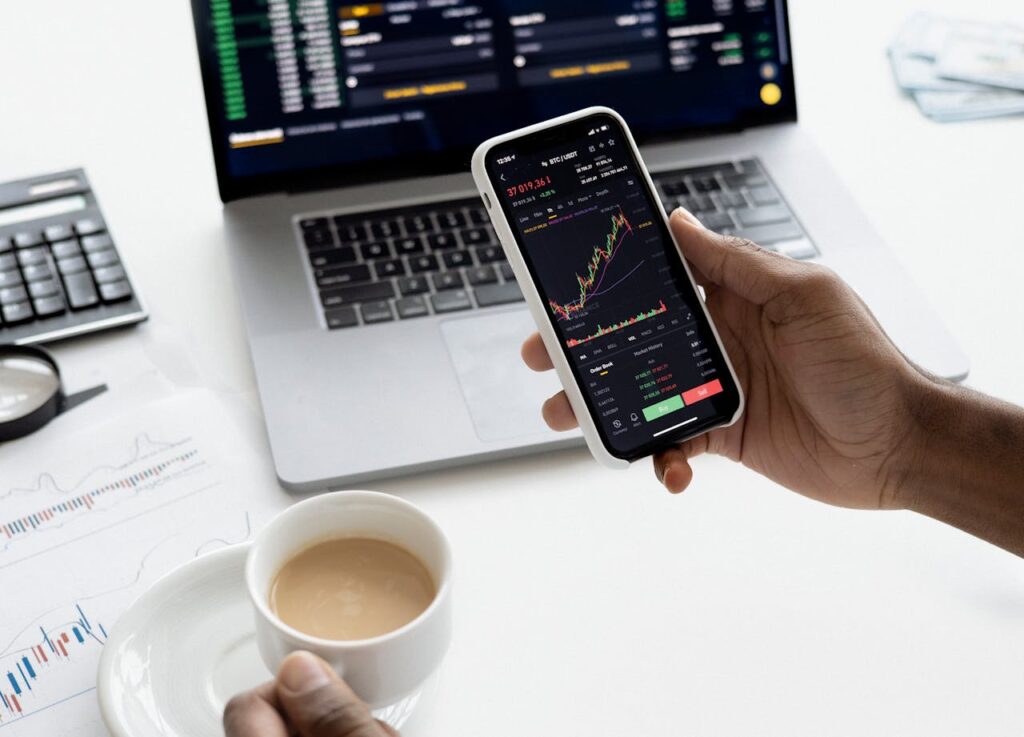Leverage lets traders control big assets with little money. It boosts profits but brings more risk, too. Traders have to pick the leverage ratio wisely, balancing possible gains and losses. Knowledge of margin calls is also crucial, as these can lead to automatic asset sales if losses become too high. Pro traders usually use tools like stop orders to manage risks better. They also monitor markets closely so they can react quickly to changes. By carefully using leverage, traders can access more options in their trading. This strategy lets them navigate the world of finance more effectively, even though trading has inherent risks.
Understanding Leverage in Trading
Leverage in trading is similar to a financial boost. It lets you make much greater trades than your basic capital would allow. Traders love it since it raises winning chances and possible profits. Let’s imagine you have $1000 and use a 10-to-1 leverage deal. Now, you can trade as if you have $10,000. But keep in mind since leverage increases profits, it also spikes losses. So, if the deal turns sour, leverage could empty your account quickly. Hence, leverage needs to be used wisely and calculatedly. Understanding four key areas could help you with that – how leverage works, its gains, potential risks, and how to trade using it properly.
Choosing the Right Leverage Ratio
Picking the correct leverage ratio is key in trading since it decides your risk and profit capacity. A high leverage could tempt with large possible gains but comes with a matching surge in risk. On the other hand, low leverage offers steadiness by reducing possible losses yet limits profit potential. Your decision should depend on how much risk you can take and the trading plan you follow. If you’re a newbie or dealing in volatile markets, lower leverage could help avoid significant losses. However seasoned traders with more risk tolerance might go for higher leverage to boost profit possibility. Always remember to base your ratio choice on a thorough market analysis and personal risk appraisal.
Awareness of Margin Calls
In trading, a margin call alerts you that more money is needed to keep your leveraged deal alive. It occurs when losses reduce your equity below a required level, therefore pushing you closer to this margin call situation. To stay away from any unpleasant surprises and automatic liquidation of your deals, keeping a close eye on your equity is important, especially when using high leverage. Responding quickly to margin calls by either adding extra funds or winding down deals could help avoid greater losses. Knowing about margin calls and their influence on your trading could assist you in managing leverage more successfully and reduce the risk linked with leveraged trading.
Risk Management Tools
In trading, leverage increases both profits and risks; hence, managing that risk becomes extremely important. Several tools serve this purpose: stop loss orders guard you against significant losses by closing your deal at a specified price; limit orders guarantee you a price or better one when the asset becomes available; hedging means taking an opposite position in another market to protect your original deal. Using these instruments helps to control potential downside and safeguard your profits. Most professional traders rely on these practices regularly to maintain a well-balanced and risk-adjusted trading strategy, particularly in the unpredictable world of leveraged trading.
Funded Trading Accounts
Funded trading accounts present an exciting way to trade using leverage without your capital investment. With this arrangement, you’re provided money from a company to conduct your deals, and hence, you could realize the advantages of profit swiftly. However, before diving in, it’s essential to ask yourself “how do funded trading accounts work,” as they typically require traders to pass an evaluation process and adhere to specific risk management rules. This technique pairs perfectly with properly managing leverage and risk since it keeps you from having to bear the financial burden of hefty losses yourself. Funded accounts let you take larger, more significant deals, particularly if they come with leverage while keeping the intrinsic financial risk under control. In this manner, they serve as a great option for both novice traders, giving a chance to trade, and seasoned traders searching for more financial flexibility and improved profit potential.
Conclusion
The use of leverage gives ample opportunity for traders who know how to manage risks properly. Picking the most appropriate leverage ratio guarantees a balanced approach between potential profit and possible loss. Being aware of margin calls helps prevent unwelcome surprises in your trading account. Using standard risk management strategies protects gains while decreasing losses. Mastering these principles equips traders with the necessary tools to traverse through the complex world of leveraged trading safely yet effectively. Trading becomes a controlled venture rather than a shot in the dark by reducing risks linked to leverage and increasing profit possibilities.

